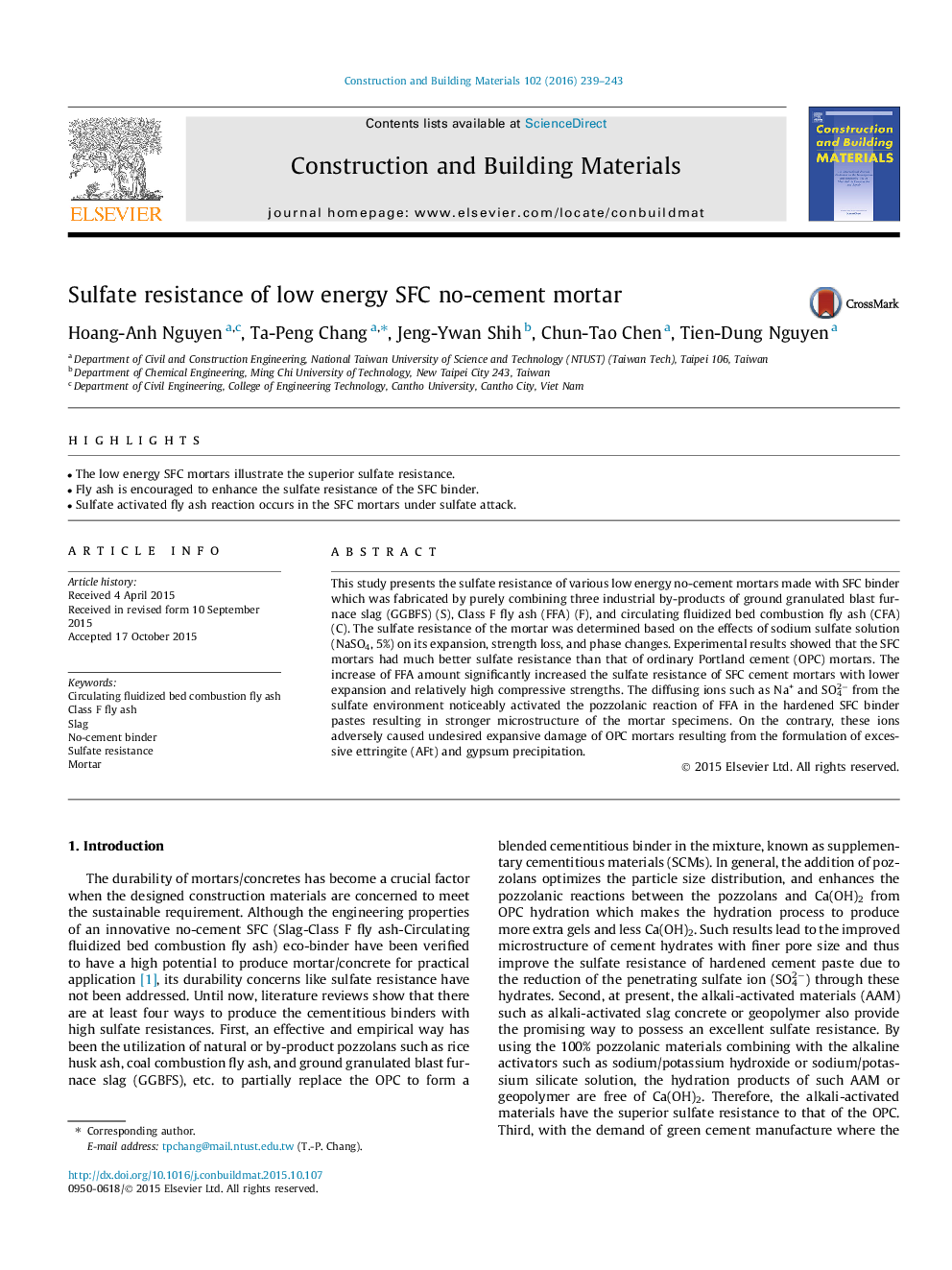| Article ID | Journal | Published Year | Pages | File Type |
|---|---|---|---|---|
| 10285025 | Construction and Building Materials | 2016 | 5 Pages |
Abstract
This study presents the sulfate resistance of various low energy no-cement mortars made with SFC binder which was fabricated by purely combining three industrial by-products of ground granulated blast furnace slag (GGBFS) (S), Class F fly ash (FFA) (F), and circulating fluidized bed combustion fly ash (CFA) (C). The sulfate resistance of the mortar was determined based on the effects of sodium sulfate solution (NaSO4, 5%) on its expansion, strength loss, and phase changes. Experimental results showed that the SFC mortars had much better sulfate resistance than that of ordinary Portland cement (OPC) mortars. The increase of FFA amount significantly increased the sulfate resistance of SFC cement mortars with lower expansion and relatively high compressive strengths. The diffusing ions such as Na+ and SO42â from the sulfate environment noticeably activated the pozzolanic reaction of FFA in the hardened SFC binder pastes resulting in stronger microstructure of the mortar specimens. On the contrary, these ions adversely caused undesired expansive damage of OPC mortars resulting from the formulation of excessive ettringite (AFt) and gypsum precipitation.
Related Topics
Physical Sciences and Engineering
Engineering
Civil and Structural Engineering
Authors
Hoang-Anh Nguyen, Ta-Peng Chang, Jeng-Ywan Shih, Chun-Tao Chen, Tien-Dung Nguyen,
